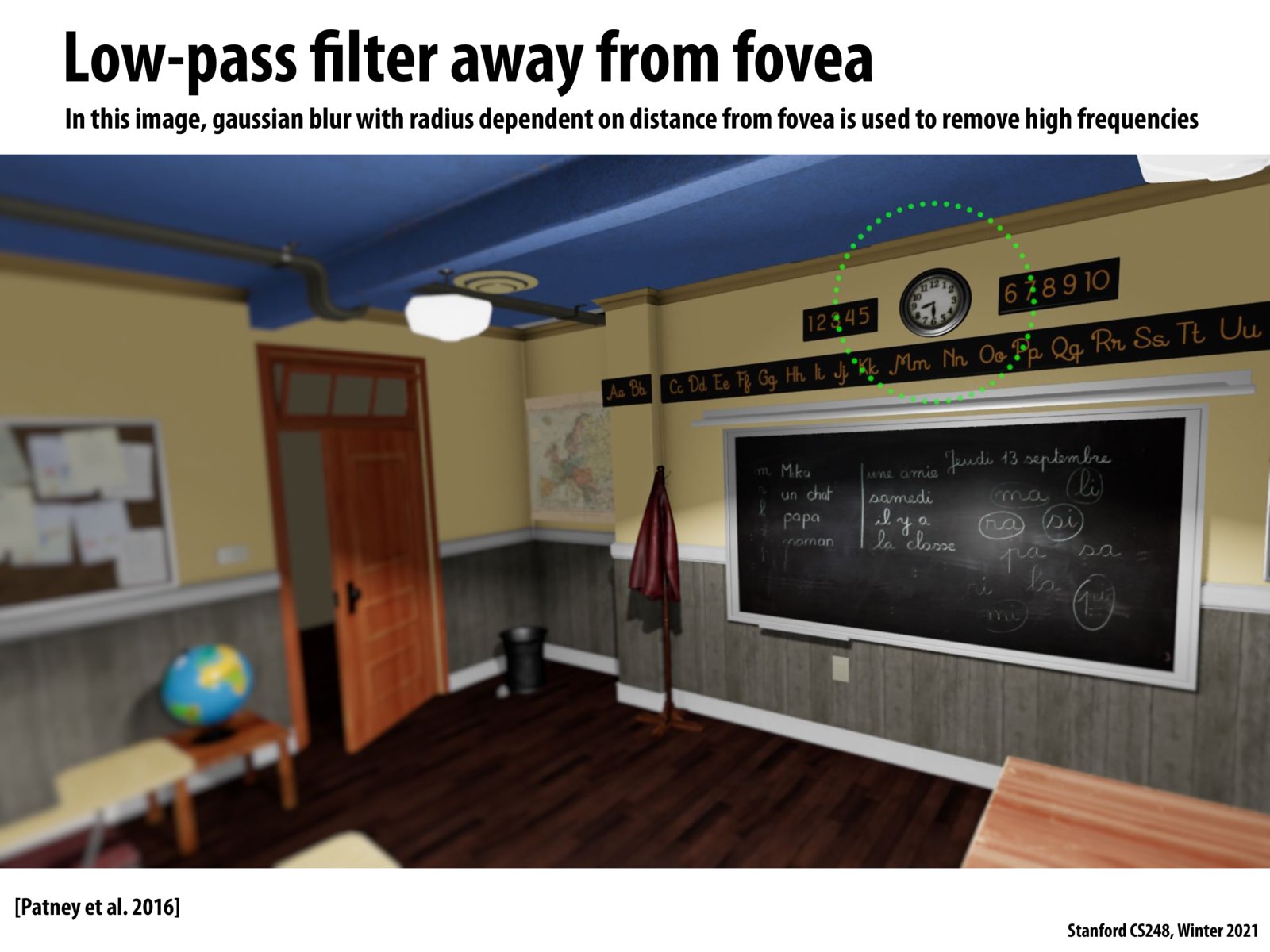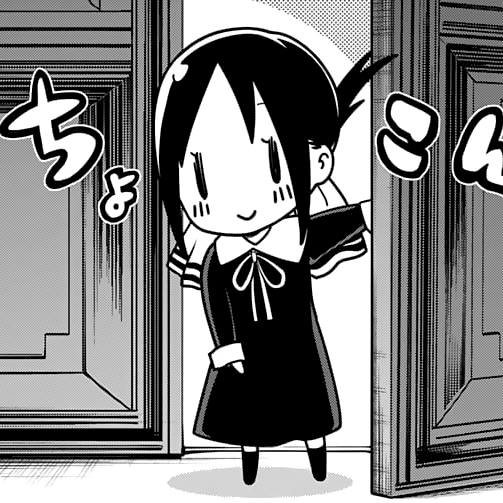


I'm a little confused why the clock is the only area not blurred in this image. And I wonder how low-pass filter causes this effect?

@mrn I think the clock is not blurred because headset wearer's eyes are looking at the clock. I am guessing we can blur image more further away from the looked-at direction.

In terms of a realistic VR experience, why would you want to blur areas away from where you are looking? Doesn't your peripheral vision do that for you?

You would want to blur the areas because such high resolution display where the eye isn't focused on isn't needed. One reason mentioned in earlier slides is to reduce the number of pixels and work needed to be done to achieve a low-latency system while still being realistic.
As for how to use a low-pass filter to reduce computation, I'm guessing the filter fits in somewhere early/midway through the rendering pipeline that will either throw away vertices/primitives/fragments, or will tweak how many samples are done at a particular point in the scene.

If people are wondering, eye tracking on consumer devices is quite feasible and possibly the next step in commercial headsets, and a nice thing about eye tracking in addition to just for rendering is for better avatars - see https://www.youtube.com/watch?v=Q-gse_hFkJM
Please log in to leave a comment.
Wouldn't a low pass filter still require the whole scene to be rendered at the same resolution first, thus not allowing for less computation/latency?